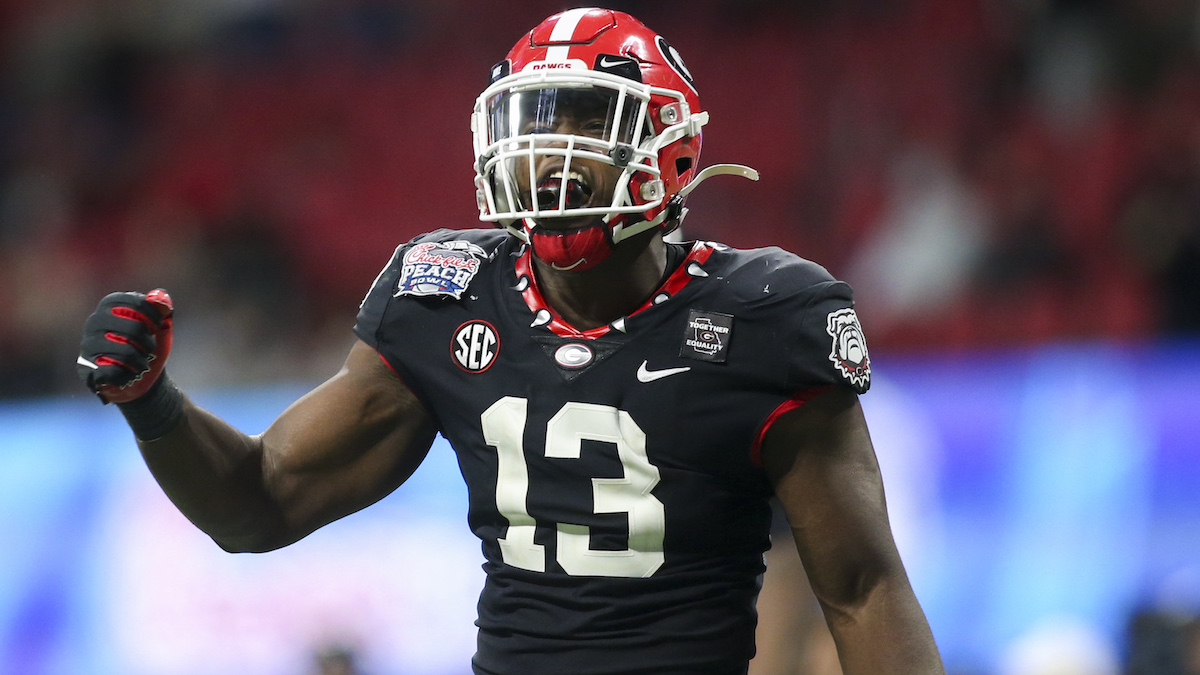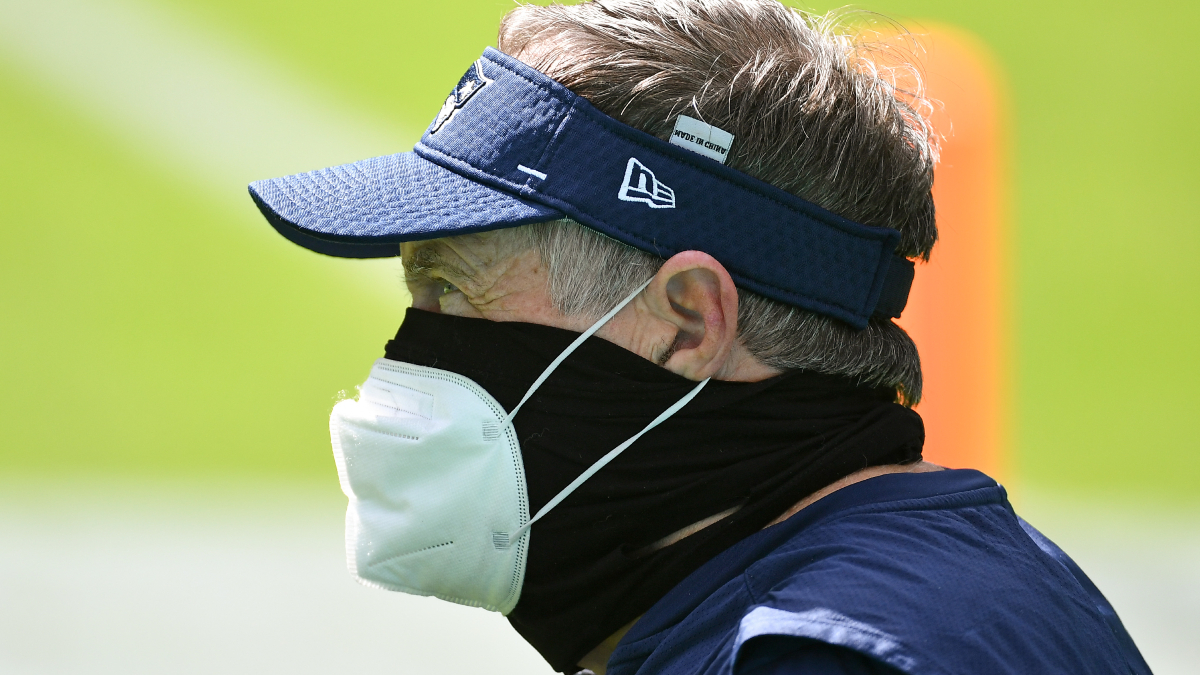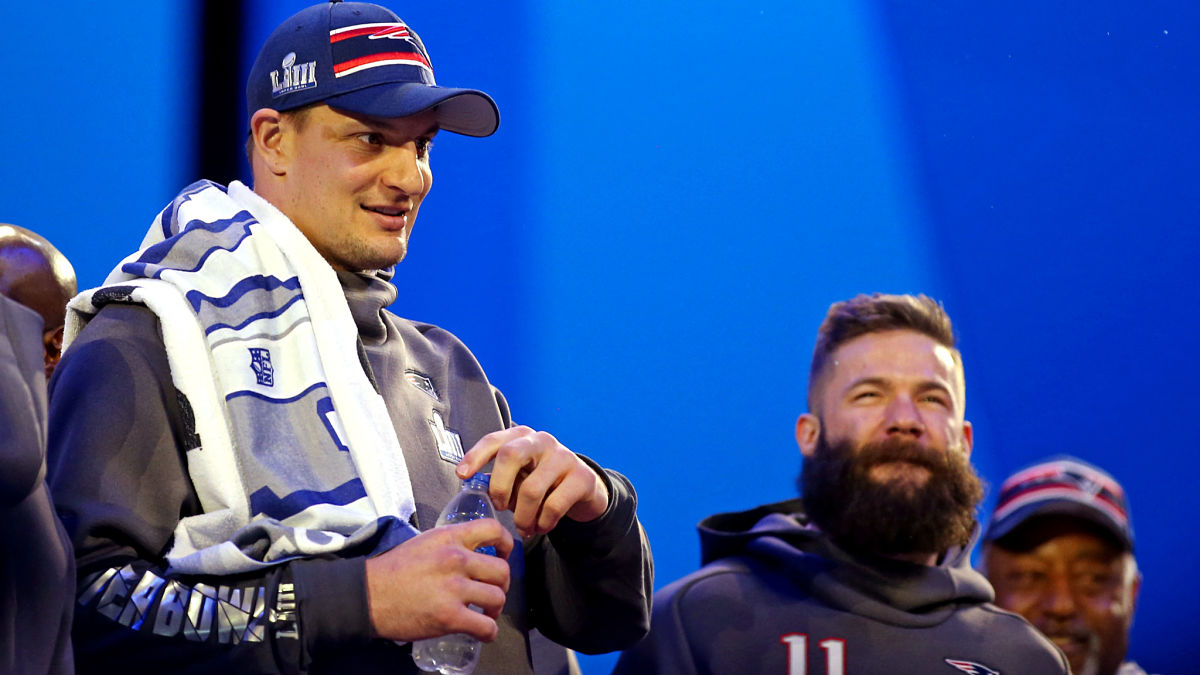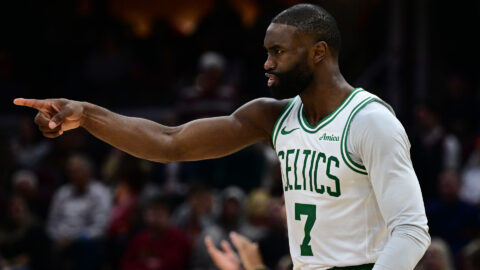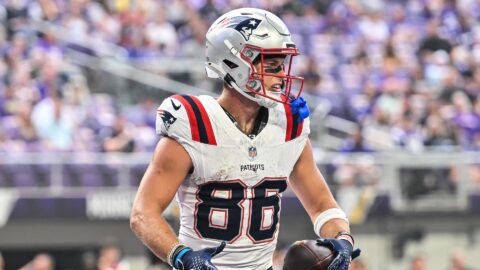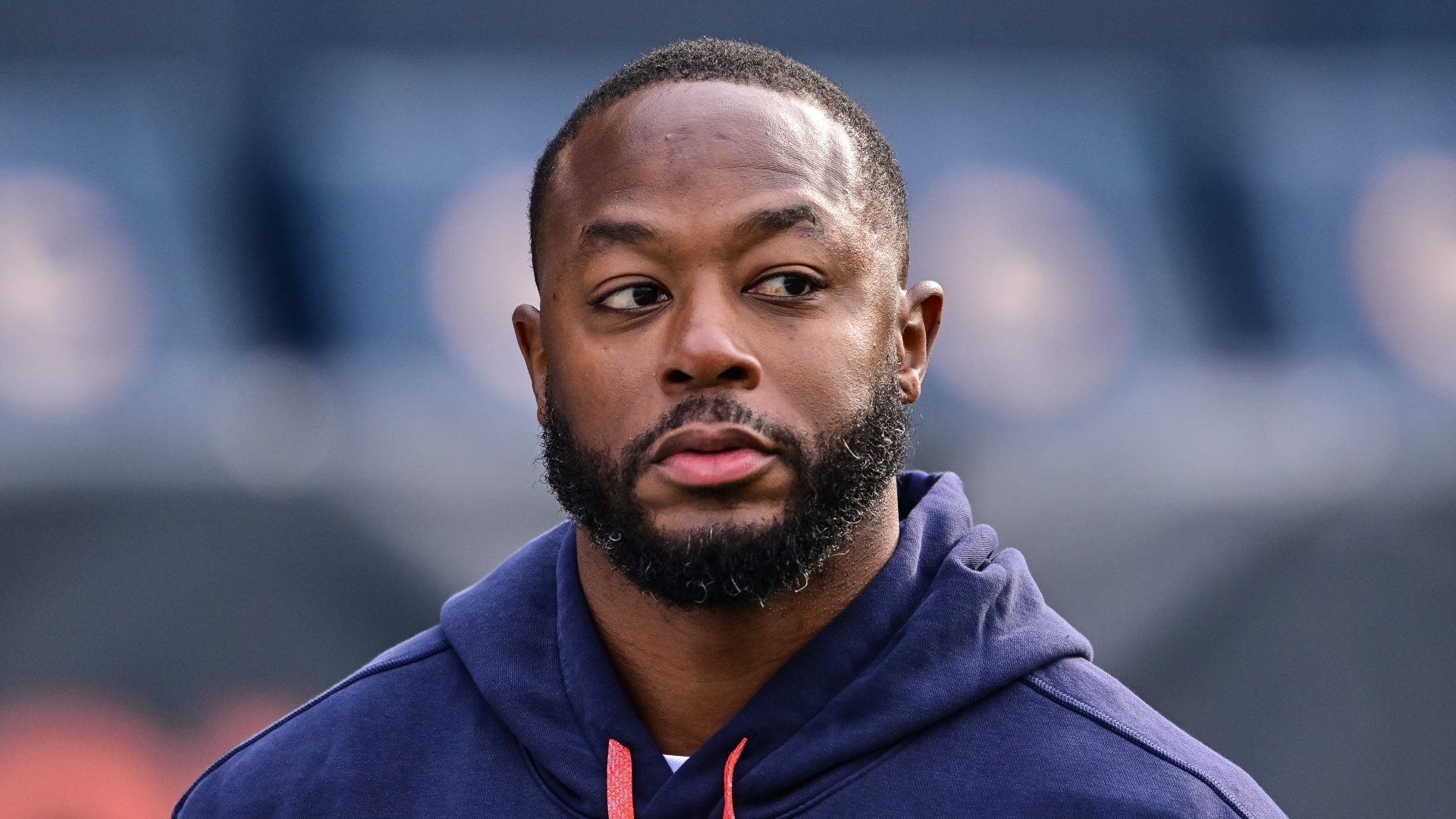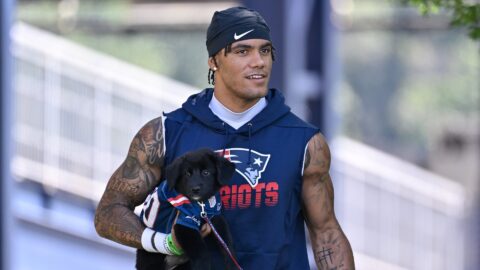You probably have an idea in your head of what the New England Patriots look for in a quarterback prospect.
That player likely resembles Tom Brady, right? Statuesque, tall, accurate, smart, good decision-maker, not the biggest arm, winner of seven Super Bowls.
It’s not entirely accurate. Then again, if the Patriots have a type when it comes to a quarterback, then it’s not easily discernible.
New England has taken 11 quarterbacks since Bill Belichick took over as head coach in 2000.
Here are some commonalities between them:
— Nine, including the last seven QBs picked, started at least two seasons.
— Six, including their last four picks, had an interception rate lower than 2 percent in their final college season.
— Eight, including the last seven QBs picked, threw more than 800 passes in their college careers.
— Seven, including the last five, completed 60 percent or more of their passes in their final seasons.
— Eight (of the 10 who ran) had a sub-5-second 40-yard dash.
— All have been 6-foot-2 or taller.
— The last four quarterbacks have been under 6-foot-4. Three of the last four have been 6-foot-2 1/2 or shorter.
But, ultimately, the same team that drafted Jimmy Garoppolo, a small-school prospect with four years as a starter under his belt, took Rohan Davey with one year of starting experience at LSU. The same team that picked Danny Etling, who had a 0.7 percent interception rate as a senior, chose Zac Robinson, who had a 4 percent interception rate as a senior.
Patriots drafted quarterbacks are probably slightly more mobile and complete a lower percentage of passes than you might expect on the surface for a player entering New England's system. Stidham, Etling and Brissett all completed less than 61 percent of their passes in their final college seasons. That's kind of surprising for a team that started Tom Brady for 19 seasons, no?
Generally speaking, Patriots drafted quarterbacks typically have started at least two seasons, and they should have an interception rate lower than 2 percent.
For most other positions, measurables seem to make a difference in the Patriots’ drafting process. That does not seem to be a major contributing factor at quarterback beyond size.
Here are the best fits for the Patriots based on Pro Day measurables, though it’s a low bar across the board.
The "score" column is the sum of those measurables standardized to the Patriots' drafted averages and standard deviation. The "key" column is the sum of only the standardized measurables that rank higher than the NFL average.
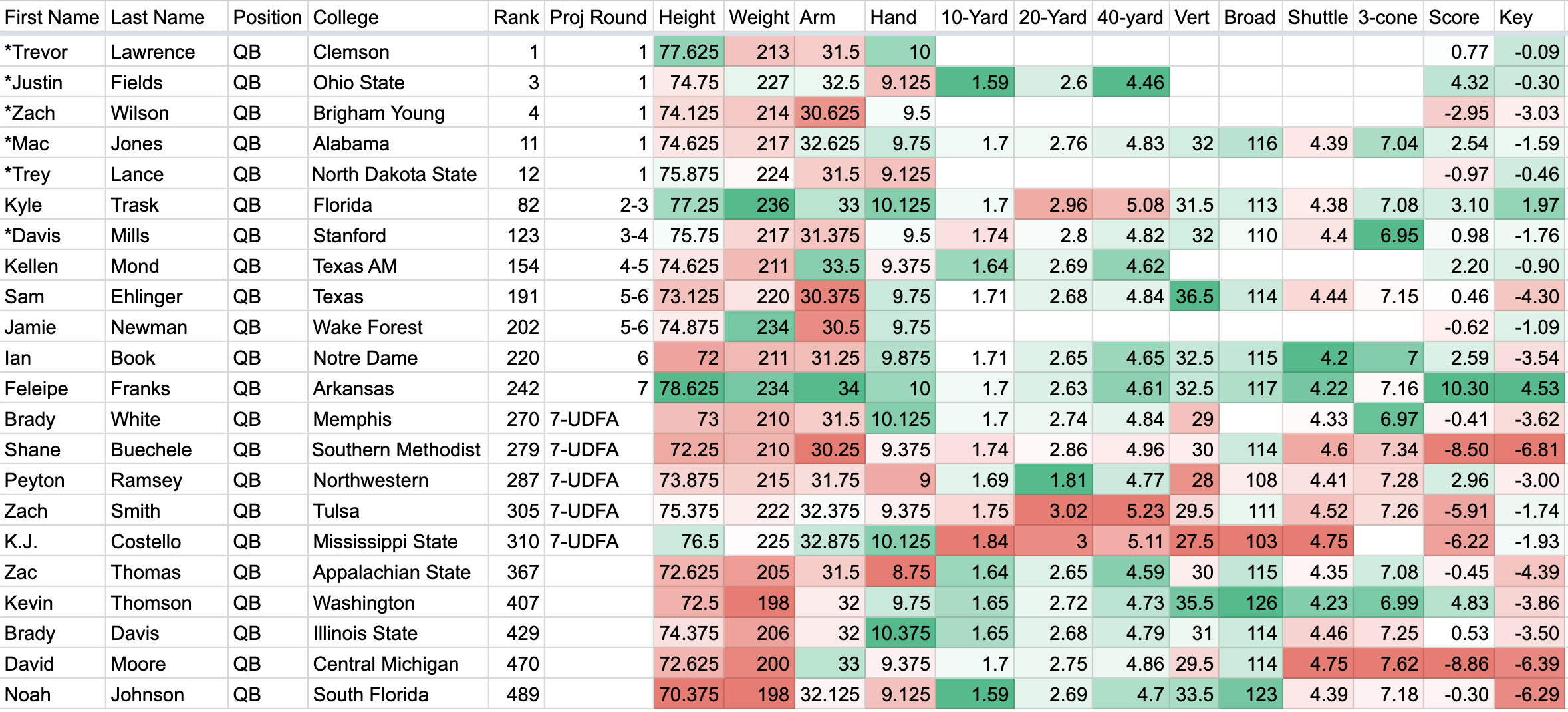
(Click for the full spreadsheet)
Here is the Patriots' draft history at QB including those average measurables:
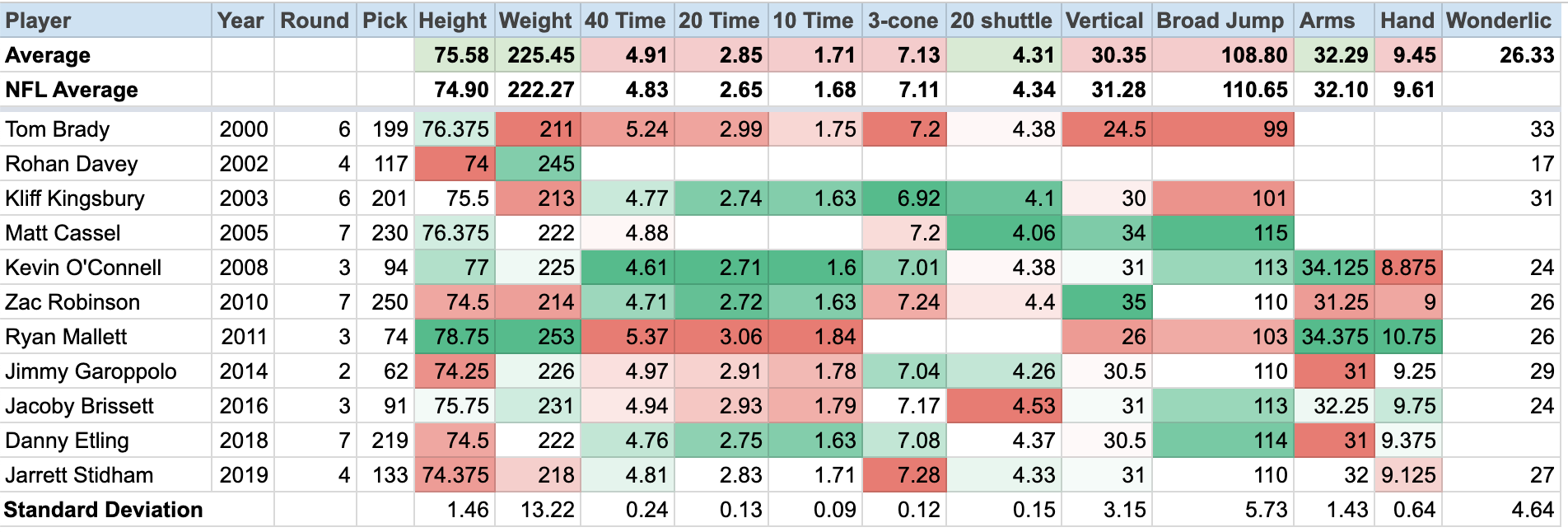
Ohio State’s Justin Fields, Alabama’s Mac Jones and North Dakota State’s Trey Lance are popular first-round targets for the Patriots but they all miss some key thresholds.
Fields only threw 618 passes in college and had a 2.7 interception rate in 2020.
Jones only started one season and threw 556 passes in college.
Lance only started one season and threw 318 college passes.
Davis Mills only threw 438 career passes at Stanford.
Florida’s Kyle Trask started at least two seasons, had an interception rate lower than 2 percent in 2020, threw 813 college passes, completed 68.9 percent of his passes in 2020 and is 6-foot-5 but ran a 5.08-second 40-yard dash.
Texas A&M’s Kellen Mond seemingly fits all criteria.
Mond:
— Started four seasons
— Had an interception rate of 1 percent in 2020
— Threw 1,358 college passes
— Completed 63.3 percent of his passes in 2020
— Ran a 4.62-second 40-yard dash
— Is 6-foot-3
Texas’ Sam Ehlinger is only 6-foot-1.
Wake Forest’s Jamie Newman only threw 506 college passes and had a 3 percent interception rate in 2019.
Notre Dame’s Ian Book and Arkansas’ Feleipe Franks fit across the board.
Beyond that, we’re talking about undrafted free agent candidates.
Without further ado, here is a potential Patriots quarterback in each round of the 2021 NFL Draft:
First Round: Justin Fields, Ohio State
It seems like Clemson's Trevor Lawrence, BYU's Zach Wilson and Jones will be the first three quarterbacks off the board well before the Patriots are set to pick 15th overall. There's an outside chance Fields or Lance are available at 15th overall. There's a better shot at them being within range of a trade up the board.
While Fields did have a 2.7 percent interception rate in 2020, that came in a small sample size of just eight games. He had just a 0.8 percent interception rate in 2019 at Ohio State.
Fields is the most athletic quarterback in the 2021 NFL Draft, and it's pretty easy to see that's the way the NFL quarterback position is heading. The fact that he's also a prolific passer should make him a great fit for any offense.
Second Round: Davis Mills, Stanford
There has been buzz that Mills could actually sneak into the end of the first round. But let's say he doesn't. He's only played in 14 college games and started 11 of them, and PFF knocked him for decision-making. He is accurate, however, tested fairly well and rated well on PFF's scale for his deep ball.
Third Round: Kyle Trask, Florida
Trask has been rated as high as a second-round prospect, and then The Athletic's Dane Brugler has him as a fourth-round pick.
Trask never started a varsity game in high school, playing behind D'Eriq King. He took a major leap forward from 2019, when he started half of the Gators' season, to 2020 when he was one of the NCAA's best quarterbacks. He competed hard in Florida's SEC championship game loss to Alabama but bombed in the Gators' Cotton Bowl loss to Oklahoma without his top weapons.
Trask is largely immobile in the pocket, but he's accurate and protected the ball well.
Fourth Round: Kellen Mond, Texas A&M
Mond has a big fan in NBC's Chris Simms, who views the former Aggie as a first-round prospect. Others aren't as high on Mond and see him going in the third, fourth or fifth round.
It's true that he never quite broke out in college, but Mond is a mobile option who protected the football well. Accuracy wasn't exactly a big strength of Mond's but that could improve, and that's never been a deciding factor in Patriots quarterback evaluations anyway (see: Mallett, Ryan).
Fifth Round: Jamie Newman, Wake Forest
Newman is worth a flier as a mobile option with good downfield accuracy. He opted out for the 2020 season after transferring to Georgia. So, it's entirely possible he would have taken a leap forward as a senior. Perhaps that jump could come in the NFL.
Sixth Round: Ian Book, Notre Dame
Book was a three-year starter at Notre Dame. He never rated highly as an NFL prospect because of a lack of arm strength, but he protected the ball well and has plenty of experience.
Seventh Round: Feleipe Franks, Arkansas
Franks was drafted by the Boston Red Sox in 2019. He has an intriguing combination of size, athleticism and arm strength, but poise is a regular concern in scouting reports. He improved upon transferring from Florida to Arkansas, which was important to note. As far as late-round fliers go, he seems like a solid choice and possesses many of the tools the Patriots typically look for in a quarterback.
